Photo: Michael Caulfield/WireImage.com
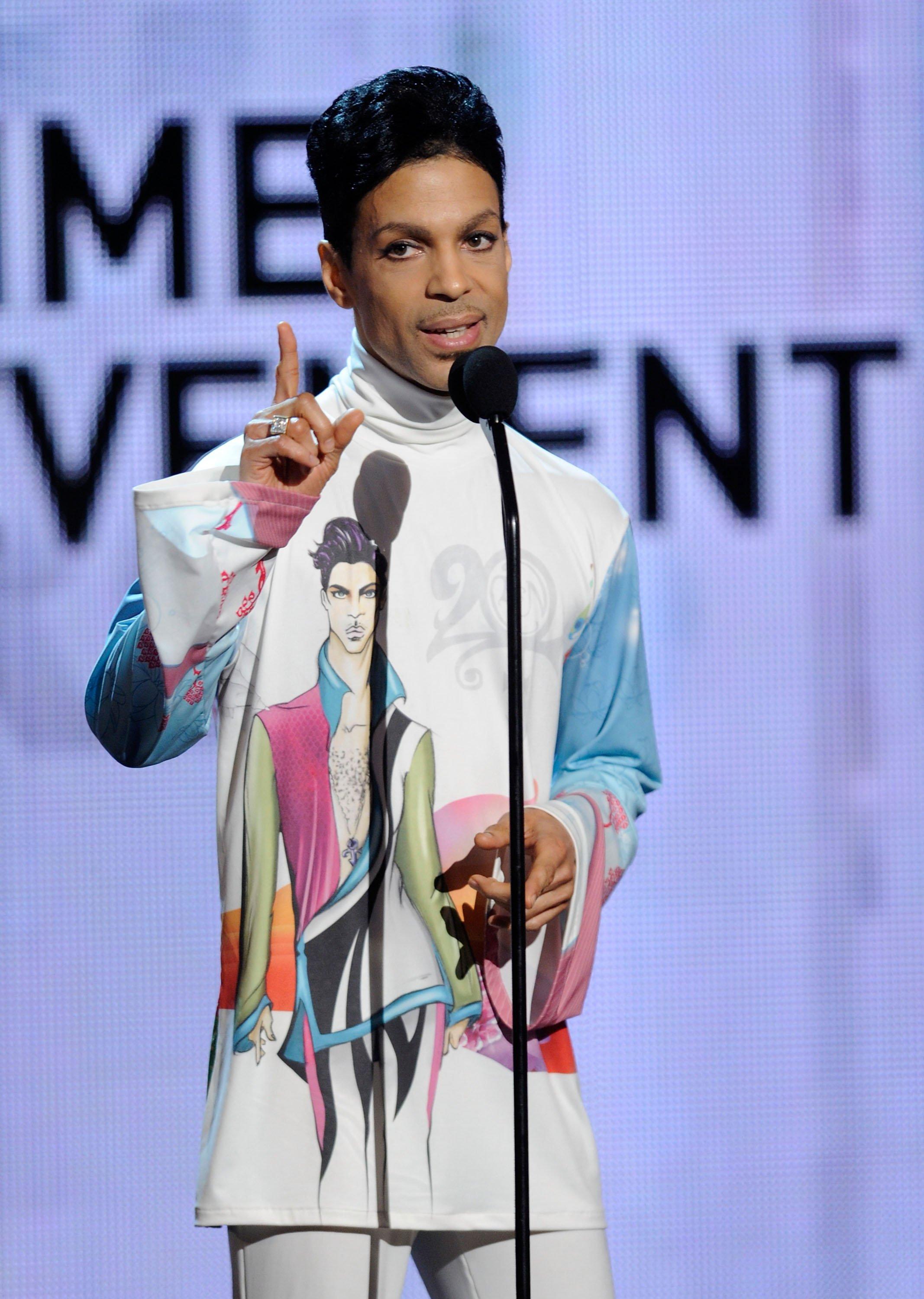
news
The Week In Music: RIP Internet
Prince's Tech De-Revolution
It may be time to cancel your Internet service, unload the laptop and MP3 player, and even do away with the number system entirely. According to Prince, technological Armageddon is upon us. "The Internet's completely over," his purple majesty said. "The Internet's like MTV. At one time MTV was hip and suddenly it became outdated. Anyway, all these computers and digital gadgets are no good. They just fill your head with numbers, and that can't be good for you." Kenny G responded to the artist formerly known as a symbol's declaration with a countering viewpoint, saying if the Internet is dead "then I must be dead, too, 'cause I use it all the time. Maybe I've got a sixth sense, and I only see dead people. I don't know." We think the jury's still out on this one.
In fact, maybe the Internet's really mostly alive. Trent Reznor revealed that he will be scoring director for David Fincher's Facebook-themed film The Social Network. Ironically, Reznor has more than 8,000 Facebook fans, though his band, or former band, Nine Inch Nails, has nearly 600,000 fans. With more than 98 percent of his fans recognizing him more under the NIN moniker, you could say Trent's Facebook presence is, well, a little Faceless, so maybe this score will score him more Facebook love.
Bieber Fever continues to reach astronomical proportions, but just how astronomical? "This s*** is huge," wrote former Guns N' Roses bassist Duff McKagan in his regular Seattle Weekly column. McKagan has taken note of Justin Bieber's meteoric rise through the lense of his 12-year-old daughter, Grace. Duff happens to be friends with Bieber's tour manager and will be taking his daughter to a concert in Everett, Wash., on July 13, and there may be a chance "the Bieber will go down on one knee that night and ask her to marry him." Could wedding bells be ringing for Justin and Grace? And will Axl Rose be invited to the wedding?
Two weeks ago, former Beatles Paul McCartney and John Lennon were fortunate enough to make our world-renowned column. This week, it's Ringo Starr, who turned 70 on Wednesday. As part of his celebration, the peace sign-flashing drummer (no, all those peace signs Justin Bieber throws down aren't new) asked everyone around the globe to say "peace and love" at noon on his birthday by any form of communication, a welcome thought for any day of the year. For those of you reticent to jump in, Ringo will go first.
The summer concert season casualty list continues to mount. This past week, the "American Idol" tour was cut short by two weeks, which follows a recent announcement regarding Lilith Fair cancelling 10 concerts. Other artists who have cut short their summer itineraries include Christina Aguilera, Country Throwdown, Eagles, the Go-Go's, Limp Bizkit, Rihanna, and U2. Even the JoBros had to drop 20 dates on their U.S. tour. "If we're missing your city, please know that we love you and we will be back soon," the band said in a statement on their website.
So you've had a bit of a problem settling back into the groove following the big Fourth of July weekend. Get back on track and further reinvigorate your patriotism with Billboard's list of the 10 Worst National Anthem Performances Ever. Remember, this is Billboard's list, so if you actually dug Rosanne Barr's 1990 version at a San Diego Padres game, feel free to comment below.
Katy Perry's "California Gurls," featuring Snoop Dogg, notches its fifth week at No. 1 song on the Billboard Hot 100 this week, while Eminem's "Love The Way You Lie," featuring Rihanna, reclaims the top spot on the iTunes singles chart.
Any news we've missed? Comment below.
For the latest GRAMMY news, visit us on Facebook, Twitter and YouTube.
Last Week In Music
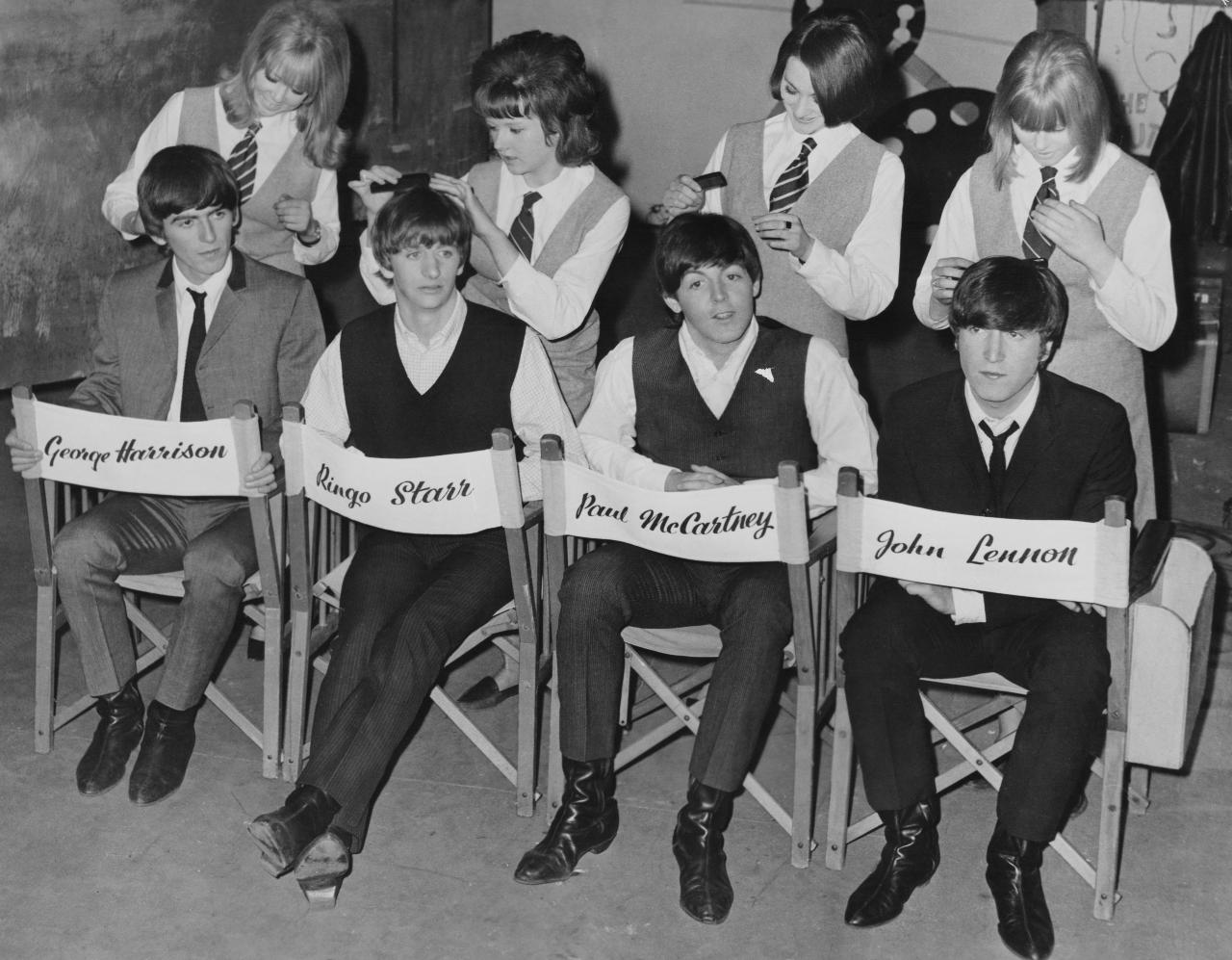
Photo: Archive Photos/Getty Images
list
'A Hard Day's Night' Turns 60: 6 Things You Can Thank The Beatles Film & Soundtrack For
This week in 1964, the Beatles changed the world with their iconic debut film, and its fresh, exuberant soundtrack. If you like music videos, folk-rock and the song "Layla," thank 'A Hard Day's Night.'
Throughout his ongoing Got Back tour, Paul McCartney has reliably opened with "Can't Buy Me Love."
It's not the Beatles' deepest song, nor their most beloved hit — though a hit it was. But its zippy, rollicking exuberance still shines brightly; like the rest of the oldies on his setlist, the 82-year-old launches into it in its original key. For two minutes and change, we're plunged back into 1964 — and all the humor, melody, friendship and fun the Beatles bestowed with A Hard Day's Night.
This week in 1964 — at the zenith of Beatlemania, after their seismic appearance on "The Ed Sullivan Show" — the planet received Richard Lester's silly, surreal and innovative film of that name. Days after, its classic soundtrack dropped — a volley of uber-catchy bangers and philosophical ballads, and the only Beatles LP to solely feature Lennon-McCartney songs.
As with almost everything Beatles, the impact of the film and album have been etched in stone. But considering the breadth of pop culture history in its wake, Fab disciples can always use a reminder. Here are six things that wouldn't be the same without A Hard Day's Night.
All Music Videos, Forever
Right from that starting gun of an opening chord, A Hard Day's Night's camerawork alone — black and white, inspired by French New Wave and British kitchen sink dramas — pioneers everything from British spy thrillers to "The Monkees."
Across the film's 87 minutes, you're viscerally dragged into the action; you tumble through the cityscapes right along with John, Paul, George, and Ringo. Not to mention the entire music video revolution; techniques we think of as stock were brand-new here.
According to Roger Ebert: "Today when we watch TV and see quick cutting, hand-held cameras, interviews conducted on the run with moving targets, quickly intercut snatches of dialogue, music under documentary action and all the other trademarks of the modern style, we are looking at the children of A Hard Day's Night."
Emergent Folk-Rock
George Harrison's 12-string Rickenbacker didn't just lend itself to a jangly undercurrent on the A Hard Day's Night songs; the shots of Harrison playing it galvanized Roger McGuinn to pick up the futuristic instrument — and via the Byrds, give the folk canon a welcome jolt of electricity.
Entire reams of alternative rock, post-punk, power pop, indie rock, and more would follow — and if any of those mean anything to you, partly thank Lester for casting a spotlight on that Rick.
The Ultimate Love Triangle Jam
From the Byrds' "Triad" to Leonard Cohen's "Famous Blue Raincoat," music history is replete with odes to love triangles.
But none are as desperate, as mannish, as garment-rending, as Derek and the Dominoes' "Layla," where Eric Clapton lays bare his affections for his friend Harrison's wife, Pattie Boyd. Where did Harrison meet her? Why, on the set of A Hard Day's Night, where she was cast as a schoolgirl.
Debates, Debates, Debates
Say, what is that famous, clamorous opening chord of A Hard Day's Night's title track? Turns out YouTube's still trying to suss that one out.
"It is F with a G on top, but you'll have to ask Paul about the bass note to get the proper story," Harrison told an online chat in 2001 — the last year of his life.
A Certain Strain Of Loopy Humor
No wonder Harrison got in with Monty Python later in life: the effortlessly witty lads were born to play these roles — mostly a tumble of non sequiturs, one-liners and daffy retorts. (They were all brought up on the Goons, after all.) When A Hard Day's Night codified their Liverpudlian slant on everything, everyone from the Pythons to Tim and Eric received their blueprint.
The Legitimacy Of The Rock Flick
What did rock 'n' roll contribute to the film canon before the Beatles? A stream of lightweight Elvis flicks? Granted, the Beatles would churn out a few headscratchers in its wake — Magical Mystery Tour, anyone? — but A Hard Day's Night remains a game-changer for guitar boys on screen.
The best part? The Beatles would go on to change the game again, and again, and again, in so many ways. Don't say they didn't warn you — as you revisit the iconic A Hard Day's Night.
Explore The World Of The Beatles
.webp)
5 Reasons John Lennon's 'Mind Games' Is Worth Another Shot

'A Hard Day's Night' Turns 60: 6 Things You Can Thank The Beatles Film & Soundtrack For
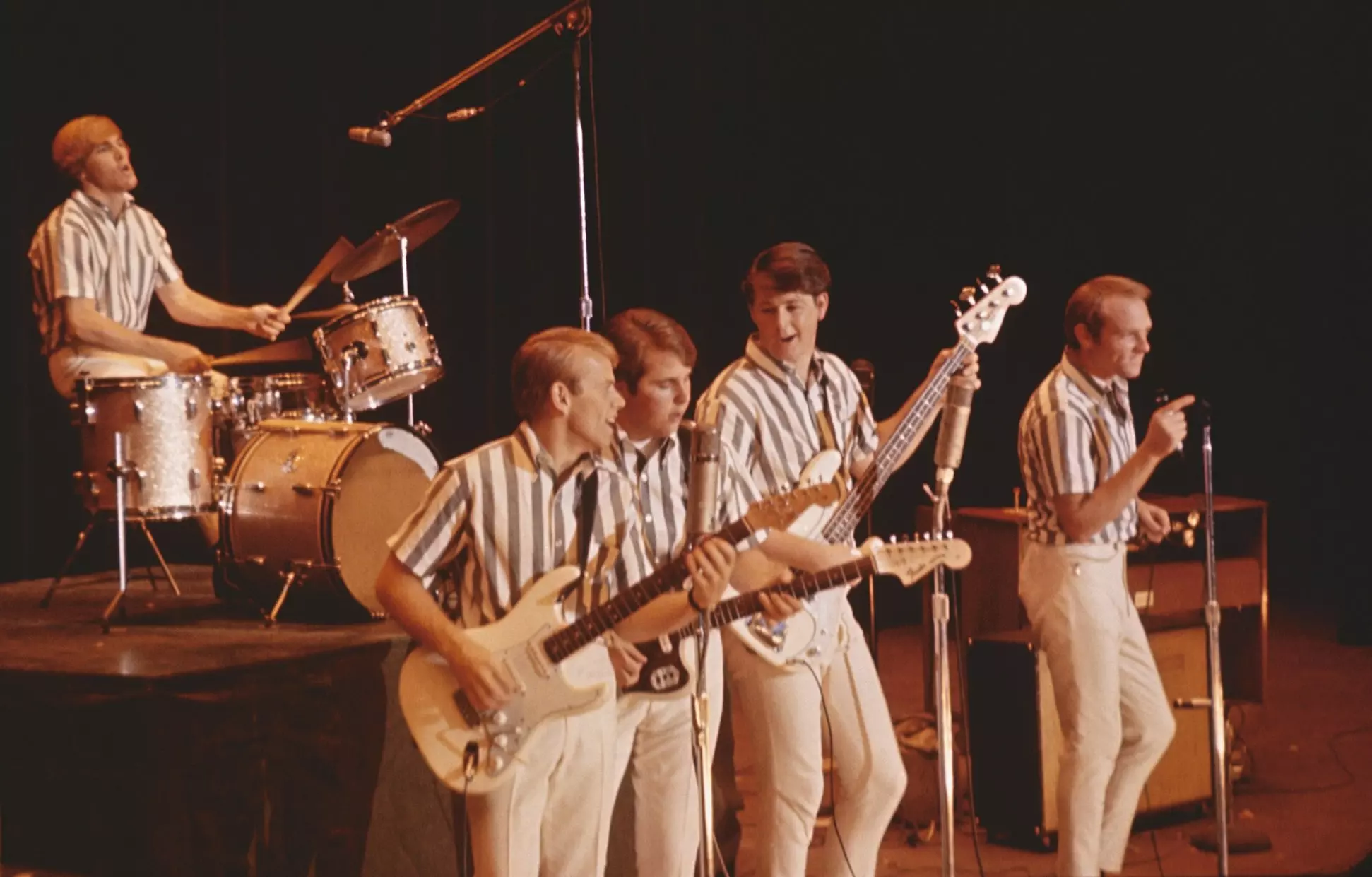
6 Things We Learned From Disney+'s 'The Beach Boys' Documentary

5 Lesser Known Facts About The Beatles' 'Let It Be' Era: Watch The Restored 1970 Film
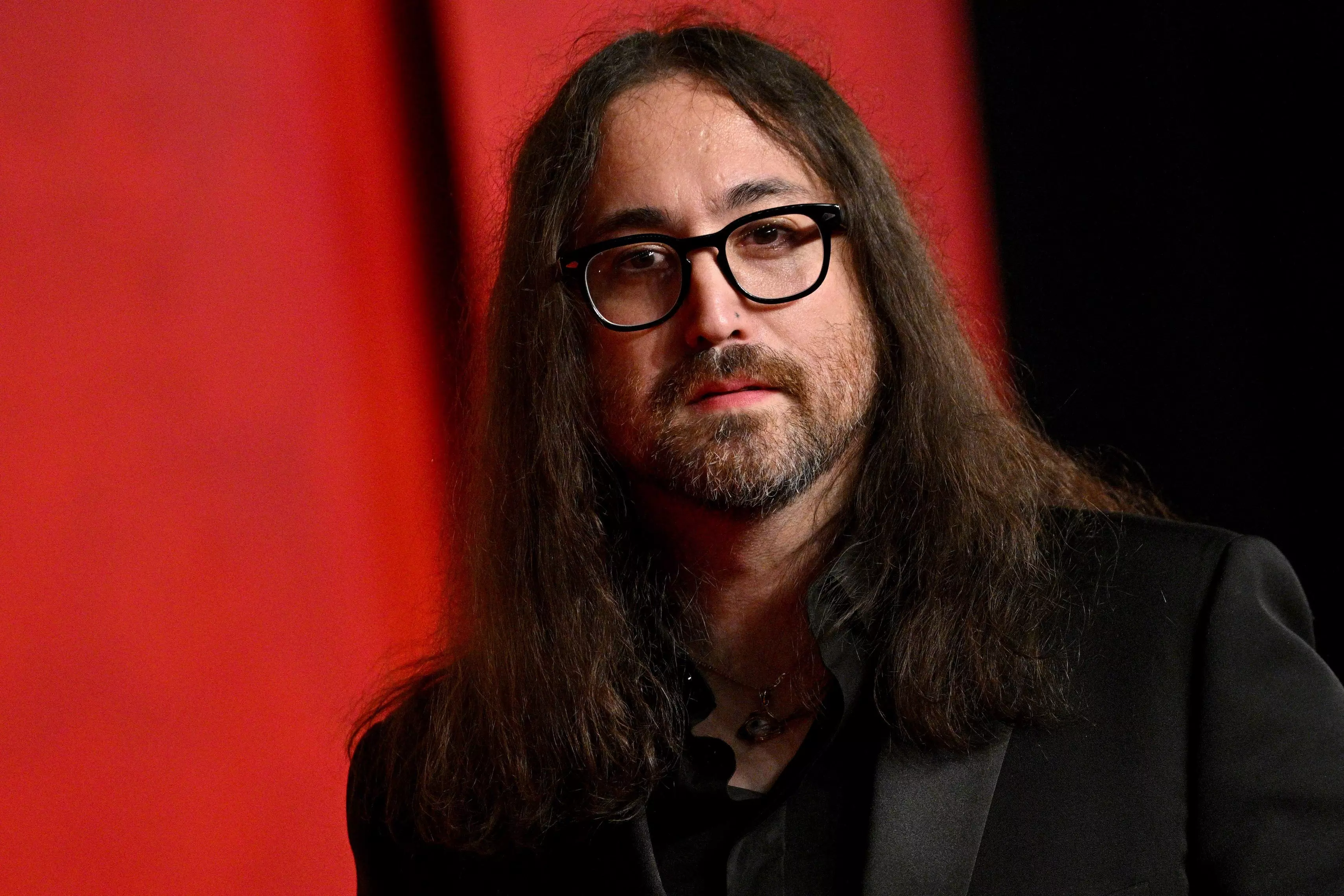
Catching Up With Sean Ono Lennon: His New Album 'Asterisms,' 'War Is Over!' Short & Shouting Out Yoko At The Oscars
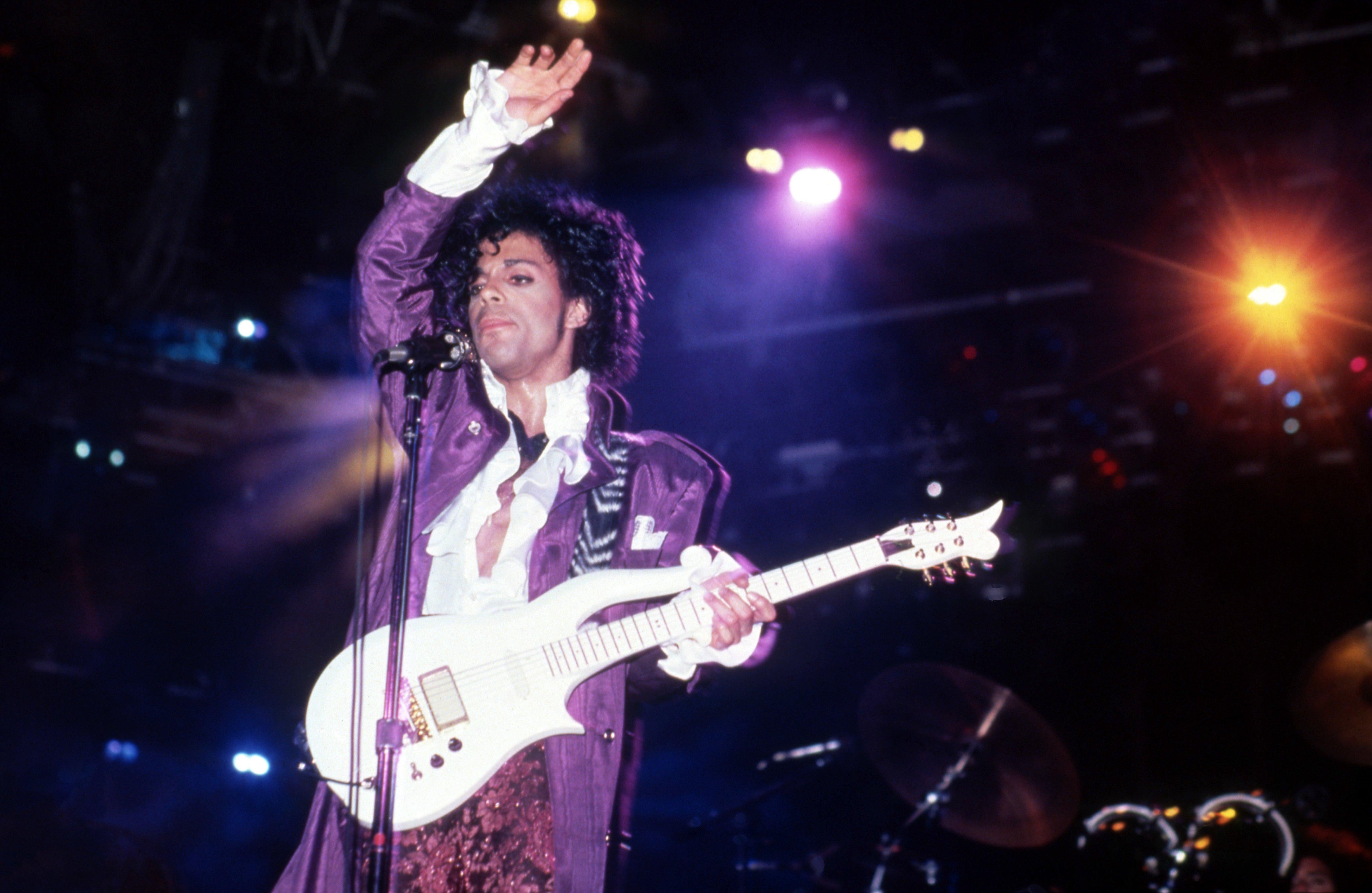
Photo: Ross Marino/Getty Images
list
7 Reasons Why Prince's 'Purple Rain' Is One Of Music’s Most Influential Albums
In honor of the 40th anniversary of 'Purple Rain,' dig into the ways Prince's magnum opus didn't just solidify him as an icon — it changed the music industry and culture at large.
"I strive for originality in my music," Prince declared in a 1985 interview with MTV. "That was, and will always be the case."
It was this determination to do things his own inimitable way that birthed the decade's most audacious superstar project: Purple Rain.
Prior to the album's June 25, 1984 release, Prince had scored some mainstream hits — including "1999" and "Little Red Corvette" — but hadn't fully blossomed into the prolific, world-conquering musical hero he's now immortalized as. Nor did he have acting experience. Yet, Prince somehow managed to convince his management and label into financing a big-screen hybrid of romance, drama and musical accompanied by an equally ambitious pop soundtrack.
It was an inherently risky career strategy that could have derailed the Purple One's remarkable rise to greatness in one fell swoop. Instead, Purple Rain enjoyed blockbuster success at both the box office and on the charts, with the film grossing more than $68 million worldwide and the album topping the Billboard 200 for a remarkable 24 weeks.
Initially conceived as a double album featuring protege girl group Apollonia 6 and funk rock associates the Time, the Purple Rain OST worked as an entirely separate entity, too. In fact, it had already sold 2.5 million copies in the States before the movie hit theaters, largely thanks to the immediacy of lead single "When Doves Cry," Prince's first ever Billboard Hot 100 No. 1.
And a full 40 years on from its release, Purple Rain's diverse range of power ballads, hard rockers and party anthems still possess the power to stun, whether the phrase "You have to purify yourself in the waters of Lake Minnetonka" is familiar or not. Here's a look at why the GRAMMY-winning record — and 2010 GRAMMY Hall of Fame inductee — is regarded as such a trailblazer.
It Hopped Genres Like No Album Before
While the streaming age has encouraged artists and listeners to embrace multiple genres, back in the 1980s, "stay in your lane" was the common mindset. Of course, a musician as versatile and innovative as Prince was never going to adhere to such a restriction.
The Purple One had already melded pop, soul, R&B, and dance to perfection on predecessor 1999. But on his magnum opus, the star took his sonic adventurism even further, flirting with neo-psychedelia, heavy metal and gospel on nine tracks which completely eschewed any form of predictability. Even its most mainstream number refused to play by the rules: despite its inherent funkiness, "When Doves Cry" is a rare chart-topper without any bass!
As you'd expect from such a virtuoso, Prince mastered every musical diversion taken. And the album's 25 million sales worldwide proved that audiences were more than happy to go along for the ride.
It Championed Female Talent On And Behind The Stage
Although the likes of Jill Jones, Wendy Melvoin and Lisa Coleman had contributed to previous Prince albums, Purple Rain was the first time the Purple One pushed his female musical proteges to the forefront. On "Take Me With U," he shares lead vocals with one of his most famous, Apollonia. On its accompanying tour, he invited Sheila E. to be his opening act. And in something of a rarity even still today, two of the soundtrack's engineers, Susan Rogers and Peggy McCreary, were women.
Melvoin and Coleman would go on to become artists in their own right as Wendy and Lisa, of course. And Prince would also help to radically transform Sheena Easton from a demure balladeer into a pop vixen; compose hits by the Bangles ("Manic Monday"), Martika ("Love Thy Will Be Done"), and Sinead O'Connor ("Nothing Compares 2 U"); and provide career launchpads for Bria Valente and 3RDEYEGIRL.
It Broke Numerous Records
As well as pushing all kinds of boundaries, Purple Rain also broke all kinds of records, including one at the music industry's most prestigious night of the year. At the 1985 GRAMMY Awards, Prince became the first Black artist ever to win Best Rock Performance By A Duo Or Group With Vocal, beating the likes of the Cars, Genesis, Van Halen, and Yes in the process. Purple Rain also picked up Best Score Soundtrack for Visual Media at the same ceremony, and was nominated in the night's most coveted Category, Album Of The Year.
Another impressive feat was the one that had only previously been achieved by the Beatles and Elvis Presley. With the same-named movie also hitting the top of the box office chart, Prince became only the third artist in history to score a No. 1 album, film and song in the same calendar year.
It Changed How Albums Were Sold
Although it seems positively chaste compared to the likes of "WAP," "Anaconda," and "My Neck, My Back (Lick It)," Purple Rain's tale of a "sex fiend" who enjoys pleasuring herself in hotel lobbies was deemed so provocative at the time of release that it inadvertently instigated a political taskforce.
Appalled by the sexual lyrical content of "Darling Nikki," a track she caught her 11-year-old daughter Karenna listening to, future Second Lady Tipper Gore decided to set up the Parents Music Resource Centre with three other "Washington Wives." The organization subsequently persuaded the record industry and retailers to issue any album containing child-unfriendly material with Parental Advisory stickers. (Another Prince-penned hit, Sheena Easton's "Sugar Walls," was also included alongside "Darling Nikki" in the "Filthy 15" list of songs the PMRC deemed to be the most offensive examples.)
It Paved The Way For The Pop Star Film
Prince was the first pop superstar from the 1980s holy trinity to bridge the gap between Hollywood and MTV, with Purple Rain arriving eight months before Madonna's star turn in Desperately Seeking Susan and four years before Michael Jackson's fantastical anthology Moonwalker. And it spawned a whole host of similar vanity projects, too.
You can trace the roots of everything from Mariah Carey's Glitter to Eminem's 8 Mile back to the tale of a troubled musical prodigy — nicknamed The Kid — who finds solace from his abusive home life at Minneapolis' hottest night spot. And while the acting and screenplay were never going to trouble the Academy Awards (as lead actress Apollonia predicted, however, it did pick up Best Score), Purple Rain's spellbinding onstage performances captures the euphoria of live music better than any other concert film, fictional or real.
It Helped Redefine Masculinity in Pop
"I'm not a woman, I'm not a man/ I am something that you'll never understand," Prince sings on Purple Rain's biggest dance floor number "I Would Die 4 U" — one of many occasions in both the album and film that challenged notions of masculinity, gender and sexuality even stronger than the Purple One had before.
Indeed, although the early '80s was unarguably a boom period for white British pop stars outside the heteronormative norm, it was rarer to find artists of color so willing to embrace such fluidity. Prince, however, had no problem — whether sporting his now-iconic dandy-ish, ruffled white shirt and flamboyant purple jacket combo, or unleashing his impressive array of diva-like shrieks and screams on "Computer Blue" and "The Beautiful Ones." André 3000, Lil Nas X and Frank Ocean are just a few of the contemporary names who have since felt comfortable enough to express themselves in similarly transgressive fashion.
It Added To The Great American Songbook
From the apocalyptic rockabilly of "Let's Go Crazy" ("We're all excited/ But we don't know why/ Maybe it's 'cause/ We're all gonna die") and messianic new wave of "I Would Die 4 U," to the experimental rock of "Computer Blue" and self-fulfilling prophecy of "Baby, I'm A Star," Purple Rain delights at every musical turn. But it's the title track that continues to resonate the most.
Following Prince's untimely death in 2016, it was "Purple Rain" — not "1999," not "Kiss," not "The Most Beautiful Girl in the World" — that many fans gravitated toward first. Initially conceived as a country duet with Stevie Nicks, the epic power ballad was described by Prince as pertaining "to the end of the world and being with the one you love and letting your faith/ God guide you through the purple rain."
The superstar acts every inch the preacher on the emotional tour-de-force. And as the final song that Prince ever performed live — on the Atlanta leg of his Piano & A Microphone tour, a week before his untimely passing — closed the curtains on a truly revolutionary career.
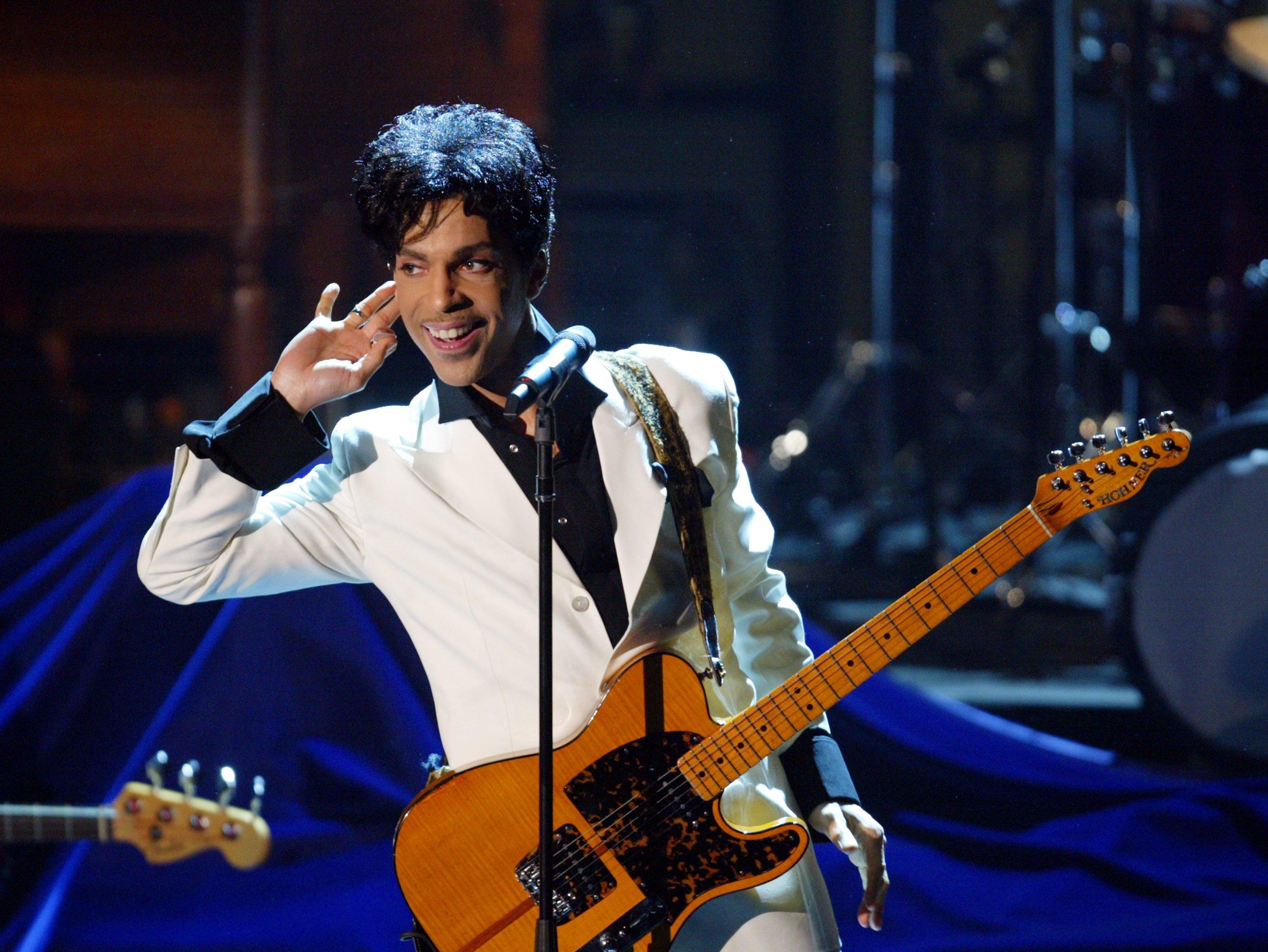
Photo: Kevin Kane/WireImage via Getty Images
list
7 Legendary Prince Performances You Can Watch Online In Honor Of 'Purple Rain'
Fans of the Purple One, unite: it's time to celebrate 40 years of 'Purple Rain.' Crank up these classic Prince performances in tribute to that epochal album, and beyond.
Have we really been living in a Princeless world for eight years? It doesn't feel like it. With every passing year, Planet Earth feels more of the magnitude of the Purple One's unbelievable accomplishments. Which includes the sheer body of work he left behind: his rumored mountain of unreleased material aside, have you heard all 39 of the albums he did release?
Yes, Prince Rogers Nelson was an impressive triple threat, and we'll likely never see his like again. In pop and rock history, some were wizards in the studio, but lacked charisma onstage, or vice versa: Prince was equally as mindblowing in both frameworks.
His iconic, GRAMMY Hall of Fame-inducted 1984 album Purple Rain — a soundtrack to the equally classic film — turns 40 on June 25. Of course, crank up that album's highlights — like "Let's Go Crazy," "When Doves Cry," and the immortal title track — and spin out from there to his other classics, like Dirty Mind, 1999, and Sign o' the Times.
To get a full dose of Prince, though, you've got to raid YouTube for performance footage of the seven-time GRAMMY winner through the years. Here are seven clips you've got to see.
Capital Centre, Landover, Maryland (1984)
Feast your eyes on Prince, the year Purple Rain came out. With guitarist Wendy Melvoin, keyboardist Dr. Fink, drummer Bobby Z., flanking him, even suboptimal YouTube resolution can't smother the magic and beauty. Check out this killing performance of Purple Rain's "I Would Die 4 U," where Prince's moves burn up the stage, with Sheila E. as much a percussion juggernaut as ever.
Read More: Living Legends: Sheila E. On Prince, Playing Salsa And Marching To The Beat Of Her Own Drum
Carrier Dome, Syracuse, New York (1985)
"Little Red Corvette," from 1982's 1999, has always been one of Prince's most magical pop songs — maybe the most magical? This performance in central New York state borders on definitive; bathed in violet and maroon, caped and cutting a rug, a 26-year-old Prince comes across as a force of divine talent.
Paisley Park, Minnesota (1999)
"I always laugh when people say he is doing a cover of this song… It's his song!" goes one YouTube commenter. That's absolutely right. Although "Nothing Compares 2 U" become an iconic hit through Sinead O'Connor's lens, it's bracing to hear the song's author nail its emotional thrust — as far fewer people have heard the original studio recording, on 1985's The Family — the sole album by the Prince-conceived and -led band of the same name.
Watch: Black Sounds Beautiful: Five Years After His Death, Prince’s Genius Remains Uncontainable
The Aladdin, Las Vegas (2002)
Let it be known that while Prince could shred with the best of them, he could equally hold down the pocket. This Vegas performance of "1+1+1=3," from 2001's The Rainbow Children, is a supremely funky workout — which also shows Prince's command as a bandleader, on top of the seeming dozens of other major musical roles he'd mastered by then.
Read More: Bobby Z. On Prince And The Revolution: Live & Why The Purple One Was Deeply Human
Rock And Roll Hall Of Fame Induction (2004)
Words can't describe Prince's universe-destroying solo over the Beatles' "While My Guitar Gently Weeps," in front of an all-star band of classic rockers including Jeff Lynne, Tom Petty, and George Harrison's son, Dhani. At song's end, Prince's guitar wails for a few more rounds, he tosses his Telecaster into the pit, and he struts offstage. We'll never see his like again.
Super Bowl Halftime Show (2007)
If you're the type of Super Bowl devotee who skips the Halftime Show, please — make time for Prince. When he digs into the trusty "Let's Go Crazy," it's hard not to follow suit. With fireworks blazing, and the Love Symbol brightly illumined, Prince arguably outshined the football game — as he tumbled through inspired cover after cover, by CCR, Dylan, and more. Naturally, he crescendoed with "Purple Rain," augmented by the drummers of the Marching 100.
Read More: Behind Diamonds and Pearls Super Deluxe Edition: A Fresh Look At Prince & The New Power Generation’s Creative Process
Coachella (2008)
At Coachella 2008, Prince offered a bounty of karaoke-style yet intriguing covers — of the B-52's ("Rock Lobster"), Sarah McLachlan ("Angel"), Santana ("Batuka"), and more. Chief among them was his eight-minute take on Radiohead's (in)famous first hit, "Creep," with a few quixotic twists, including flipping the personal pronoun I to a very Prince-like U.
"U wish U were special, / So do I," he yelps in the pre-chorus. Oh, Prince: to quote the radio-edited, de-vulgarized chorus of "Creep," you were so very special.
8 Ways Musicology Returned Prince To His Glory Days
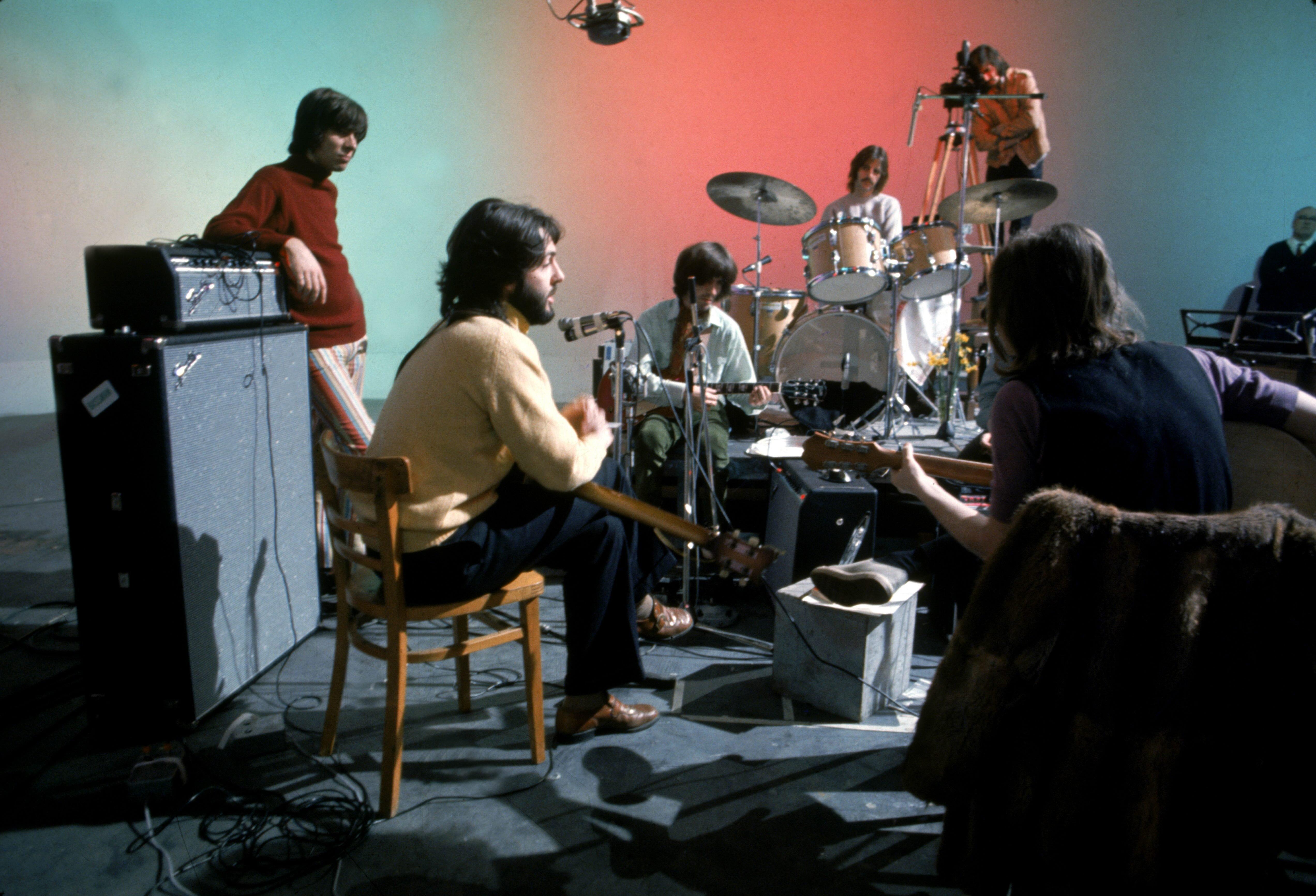
Photo: Ethan A. Russell / © Apple Corps Ltd
list
5 Lesser Known Facts About The Beatles' 'Let It Be' Era: Watch The Restored 1970 Film
More than five decades after its 1970 release, Michael Lindsay-Hogg's 'Let it Be' film is restored and re-released on Disney+. With a little help from the director himself, here are some less-trodden tidbits from this much-debated film and its album era.
What is about the Beatles' Let it Be sessions that continues to bedevil diehards?
Even after their aperture was tremendously widened with Get Back — Peter Jackson's three-part, almost eight hour, 2021 doc — something's always been missing. Because it was meant as a corrective to a film that, well, most of us haven't seen in a long time — if at all.
That's Let it Be, the original 1970 documentary on those contested, pivotal, hot-and-cold sessions, directed by Michael Lindsay-Hogg. Much of the calcified lore around the Beatles' last stand comes not from the film itself, but what we think is in the film.
Let it Be does contain a couple of emotionally charged moments between maturing Beatles. The most famous one: George Harrison getting snippy with Paul McCartney over a guitar part, which might just be the most blown-out-of-proportion squabble in rock history.
But superfans smelled blood in the water: the film had to be a locus for the Beatles' untimely demise. To which the film's director, Michael Lindsay-Hogg, might say: did we see the same movie?
"Looking back from history's vantage point, it seems like everybody drank the bad batch of Kool-Aid," he tells GRAMMY.com. Lindsay-Hogg had just appeared at an NYC screening, and seemed as surprised by it as the fans: "Because the opinion that was first formed about the movie, you could not form on the actual movie we saw the other night."
He's correct. If you saw Get Back, Lindsay-Hogg is the babyfaced, cigar-puffing auteur seen throughout; today, at 84, his original vision has been reclaimed. On May 8, Disney+ unveiled a restored and refreshed version of the Let it Be film — a historical counterweight to Get Back. Temperamentally, though, it's right on the same wavelength, which is bound to surprise some Fabs disciples.
With the benefit of Peter Jackson's sound-polishing magic and Giles Martin's inspired remixes of performances, Let it Be offers a quieter, more muted, more atmospheric take on these sessions. (Think fewer goofy antics, and more tight, lingering shots of four of rock's most evocative faces.)
As you absorb the long-on-ice Let it Be, here are some lesser-known facts about this film, and the era of the Beatles it captures — with a little help from Lindsay-Hogg himself.
The Beatles Were Happy With The Let It Be Film
After Lindsay-Hogg showed the Beatles the final rough cut, he says they all went out to a jovial meal and drinks: "Nice food, collegial, pleasant, witty conversation, nice wine."
Afterward, they went downstairs to a discotheque for nightcaps. "Paul said he thought Let it Be was good. We'd all done a good job," Lindsay-Hogg remembers. "And Ringo and [wife] Maureen were jiving to the music until two in the morning."
"They had a really, really good time," he adds. "And you can see like [in the film], on their faces, their interactions — it was like it always was."
About "That" Fight: Neither Paul Nor George Made A Big Deal
At this point, Beatles fanatics can recite this Harrison-in-a-snit quote to McCartney: "I'll play, you know, whatever you want me to play, or I won't play at all if you don't want me to play. Whatever it is that will please you… I'll do it." (Yes, that's widely viewed among fans as a tremendous deal.)
If this was such a fissure, why did McCartney and Harrison allow it in the film? After all, they had say in the final cut, like the other Beatles.
"Nothing was going to be in the picture that they didn't want," Lindsay-Hogg asserts. "They never commented on that. They took that exchange as like many other exchanges they'd had over the years… but, of course, since they'd broken up a month before [the film's release], everyone was looking for little bits of sharp metal on the sand to think why they'd broken up."
About Ringo's "Not A Lot Of Joy" Comment…
Recently, Ringo Starr opined that there was "not a lot of joy" in the Let it Be film; Lindsay-Hogg says Starr framed it to him as "no joy."
Of course, that's Starr's prerogative. But it's not quite borne out by what we see — especially that merry scene where he and Harrison work out an early draft of Abbey Road's "Octopus's Garden."
"And Ringo's a combination of so pleased to be working on the song, pleased to be working with his friend, glad for the input," Lindsay-Hogg says. "He's a wonderful guy. I mean, he can think what he wants and I will always have greater affection for him.
"Let's see if he changes his mind by the time he's 100," he added mirthfully.
Lindsay-Hogg Thought It'd Never Be Released Again
"I went through many years of thinking, It's not going to come out," Lindsay-Hogg says. In this regard, he characterizes 25 or 30 years of his life as "solitary confinement," although he was "pushing for it, and educating for it."
"Then, suddenly, the sun comes out" — which may be thanks to Peter Jackson, and renewed interest via Get Back. "And someone opens the cell door, and Let it Be walks out."
Nobody Asked Him What The Sessions Were Like
All four Beatles, and many of their associates, have spoken their piece on Let it Be sessions — and journalists, authors, documentarians, and fans all have their own slant on them.
But what was this time like from Lindsay-Hogg's perspective? Incredibly, nobody ever thought to check. "You asked the one question which no one has asked," he says. "No one."
So, give us the vibe check. Were the Let it Be sessions ever remotely as tense as they've been described, since man landed on the moon? And to that, Lindsay-Hogg's response is a chuckle, and a resounding, "No, no, no."
